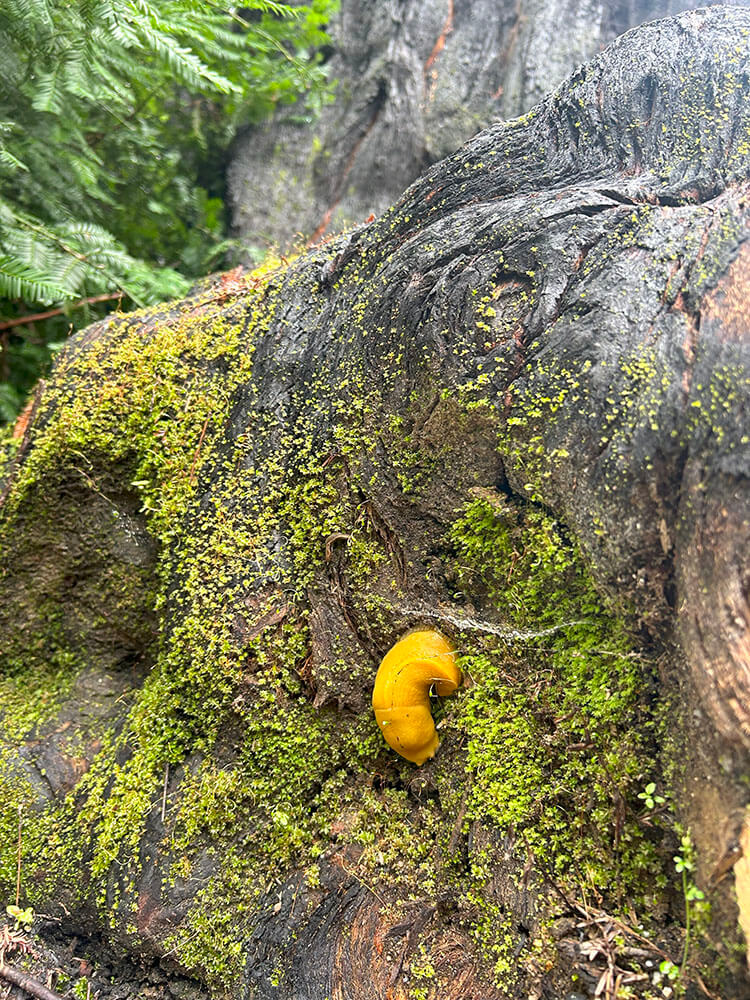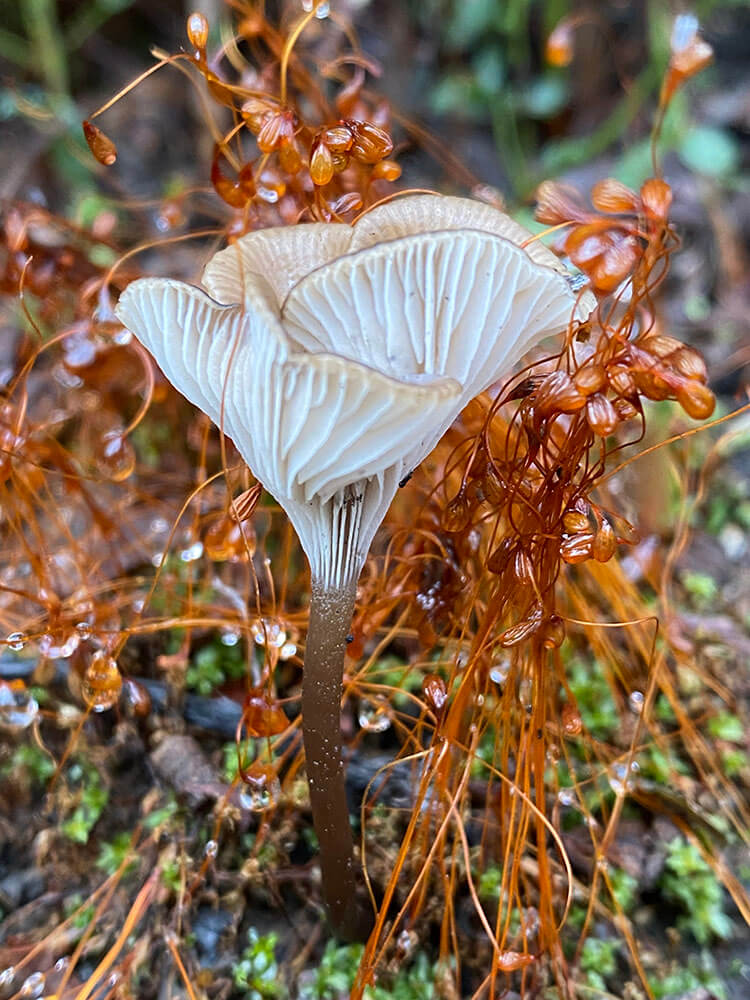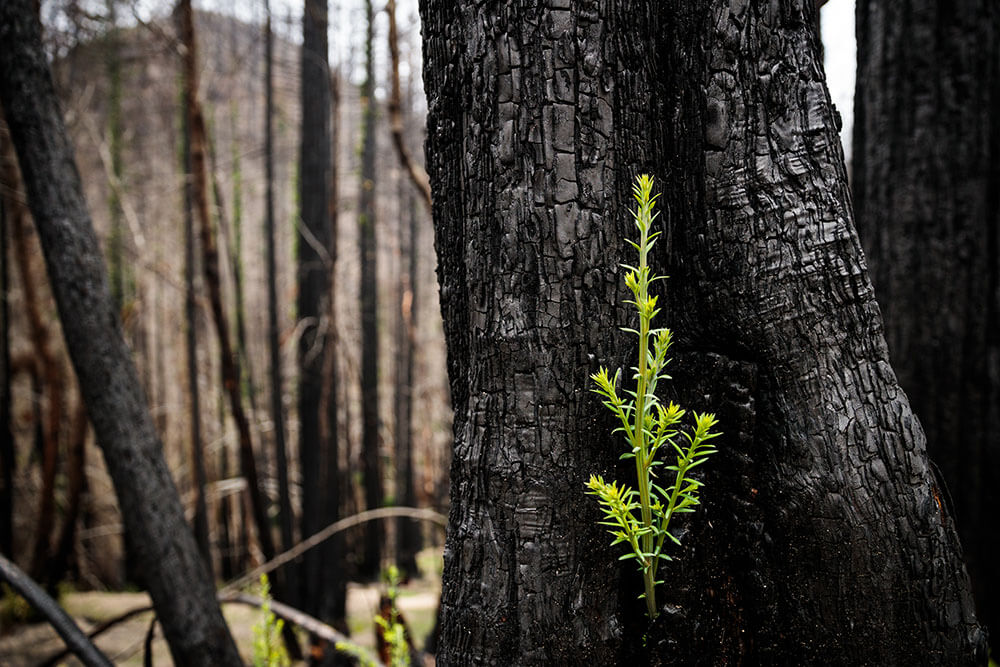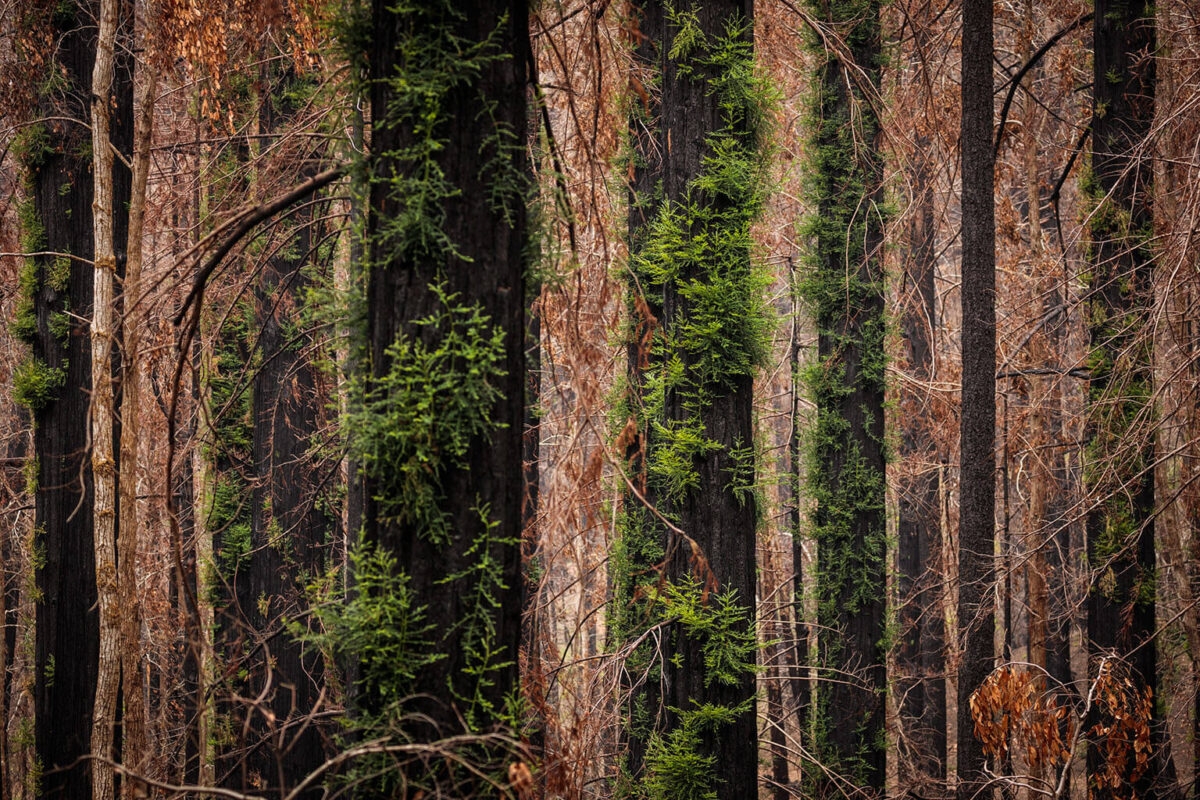Words by Lotus Abrams
Arriving at Big Basin Redwoods State Park recently with my family in tow—our first visit to the park since the 2020 CZU Lightning Complex Fire engulfed the Santa Cruz Mountains in flames—I have to admit that I wasn’t sure what to expect. In just 24 hours, the wildfire blazed through 97% of the oldest state park in California, destroying 85 miles of trails and 100 structures, including the iconic 1930s-era campfire center and the 1911 Old Lodge, plus a brand-new nature museum that was set to open in 2021.
We’re here to meet our guide for the day, Garret Hammack, a planner with California State Parks’ Santa Cruz District. As we begin our walk, I can’t help but reminisce about how different the park looked when my husband and I took our daughters here before the fire, on one of their first camping trips. Today the majestic redwoods, some of which are over 2,000 years old, are missing their glorious crowns, their bark blackened by the fire. The Douglas firs did not survive the flames, and neither did the campsites. But despite the destruction, I start to notice that something remarkable is happening at Big Basin: The forest ecosystem is once again full of life.
SIGNS OF RENEWAL
The grasses and ferns are flourishing on the sunlit forest floor and in the meadows. My daughter spots a banana slug. Garret shares that bobcats, foxes, deer and birds are finding their way back to the park, and new and unusual species of fungi are appearing. Most remarkably, bushy, green new growth is sprouting from the charred redwoods. “The vast majority of the old growth redwood trees survived because they can sprout directly from the trunk or any of the branches, even when they’re completely burned,” Garret tells us.

Cover Photo Courtesy of: Max Whittaker - Save the Redwoods League / Photo Courtesy of: Friends of Santa Cruz County State Parks
Scientists have long known that redwoods are well-adapted to fire, but the mechanism of their survival wasn’t fully understood. Big Basin offered researchers from Northern Arizona University the chance to study their seemingly miraculous recovery. “What they found is that, over their lifetime, these trees store a portion of the carbon that they take from the atmosphere through photosynthesis as a kind of insurance policy, so when something like this happens, they can tap into those reserves to form new needles,” says Ben Blom, director of stewardship and restoration at nonprofit Save the Redwoods League, which helped to fund the study. Those banked reserves give redwoods an incredible advantage over other forest flora because they can regrow much more quickly, he adds.
Hiking the park’s trails provides a unique opportunity to witness the forest’s resiliency up close. Start at Big Basin’s primary day use parking lot to find the easy, accessible half-mile Redwood Loop Trail, which meanders through some of the oldest and tallest trees in the park, including the Mother and Father of the Forest. Guided hikes on the trail are offered on weekends. Or, challenge yourself with one of the longer treks, like the four-mile Ocean View Summit Loop, which rewards visitors with ridgetop views of the Pacific.

Photo Courtesy of: Friends of Santa Cruz County State Parks
While many of Big Basin’s trails are still closed, restoration work is happening at a steady clip. A team of 50-plus state park staff and conservation crew members has been camping in the backcountry year-round since the fire, working to clear and reconstruct the 18,000-acre park’s network of trails.
At the park’s western coastal entrance, the new 684-square-foot Rancho del Oso Welcome Center opened last year, featuring interpretive exhibits and an observation deck with ocean views. Open trails here include the seasonal Marsh Trail, accessible from May through October, and the Hoover Trail that’s open year-round. While the campsites in the heart of Big Basin remain closed, a small interim campground at Rancho del Oso offers six places to pitch your tent.
WHAT’S AHEAD
Looking to the future, the Reimagining Big Basin initiative outlines a plan for rebuilding visitor facilities—just not in their original locations. “Early planners weren’t expecting to get a million visitors a year coming by car from Highway 280 and Highway 17,” Garret says. “The silver lining of the fire is that now we have an opportunity to redesign the park so that it can handle that kind of visitation while also lessening the impacts on the natural resources.”

Cover Photo Courtesy of: Max Whittaker - Save the Redwoods League
Experts say that as long as there have been redwoods at Big Basin, there have been fires, but a wildfire of the magnitude of the CZU Complex hadn’t been seen for hundreds of years. One reason is that advancements in wildfire suppression have led to a buildup of overgrowth, Garret says, leaving parks like Big Basin vulnerable to extreme fire events that are intensified by climate change.
Save the Redwoods League, California State Parks and a coalition of other partners are proposing a new forest stewardship plan that includes thinning and prescribed burning, techniques employed by the region’s indigenous people for thousands of years. Their hope is to help keep Big Basin’s redwood forests healthy in a warmer, drier climate. If it works, visitors will be able to appreciate the beauty of these ancient giants for generations to come.
Visiting Big Basin Big Basin Redwoods State Park is open for limited day use. Parking reservations at the primary day use area are recommended ($6 per vehicle plus a $2 reservation fee, or $10 per vehicle without a reservation). No fees or reservations are required for day use at Rancho del Oso. Hop on a seasonal shuttle at the Saddle Mountain parking area, a pilot program that allows visitors to make a reservation and get a ride into the park, or take advantage of Santa Cruz Metro’s expanded seasonal bus route on weekends. Check parks.ca.gov/bigbasin for trail maps and updates.


